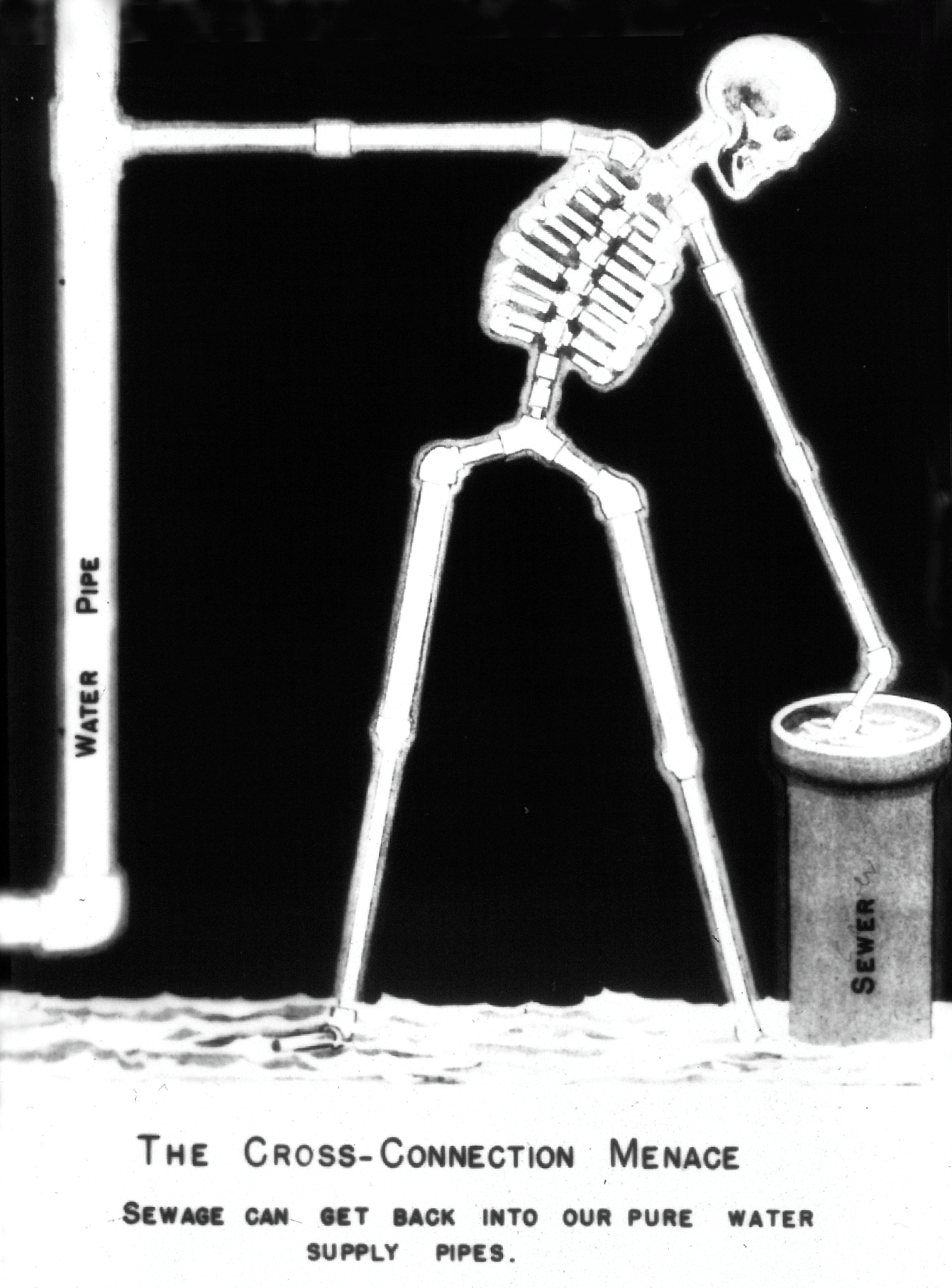Much of IIHR’s research touches all our lives, affecting human health and well-being in meaningful ways. Studies of biofluids, environmental contaminants, vulnerability, and resilience are particularly relevant to each of us. In addition, projects focused on renewable energy and watersheds help remediate society’s negative impacts on the environment, leading to a more sustainable, enjoyable way of life for everyone.
A Legacy of Research
Some of IIHR’s activities in this area date back to the first half of the last century. For example, IIHR’s location near the University of Iowa’s hydropower dam is not a coincidence—the hydropower turbine was part of the lab’s early research and educational offerings.
From the late 1930s until well after World War II, IIHR served as the official testing laboratory for the National Association of Master Plumbers. The institute’s work led to plumbing improvements that decreased health hazards. For example, in the 1930s and 1940s, IIHR conducted research on toilet plumbing to design a system that prevented raw sewage from contaminating drinking water. This work led to educational films and lectures on plumbing and public health.
IIHR’s foray into biomechanics began with a 1967 National Institutes of Health grant to model stresses on red blood cells.
Explore IIHR’s current research areas related to health and the environment in the descriptions and links below.



Contaminants in the Environment
IIHR has long been a leader in the study and modeling of fluids in the environment. It was a natural progression to couple those models with the transportation and fate of contaminants in our rivers and streams, which can cause serious environmental and human health problems. IIHR researchers monitor, study, and model contaminants such as human waste, lead, polychlorinated biphenyls (PCBs), heavy metals, and emerging contaminants in ground and surface water. IIHR is also home for the University of Iowa’s research activities sponsored by the Iowa Nutrient Research Center, supporting the center’s science-based approach to nutrient management research. IIHR also hosts the Iowa Water Quality Information System (IWQIS), providing current information about water quality across Iowa.

Iowa Superfund Research Program
IIHR is the administrative home of the Iowa Superfund Research Program (ISRP). This major research program, funded by the National Institutes of Health, began in 2006. ISRP faculty and students study topics related to PCBs (polychlorinated biphenyls), including their sources in the environment, detection and monitoring, levels of human exposure and their health effects, and remediation.
Working with communities, government partners, and other Superfund Research Programs, IIHR brings a broad range of expertise to bear on public health problems associated with Superfund chemicals.

Iowa Watershed Approach
The Iowa Watershed Approach (IWA) is a statewide program that ran from 2010-2022 and was funded by the U.S. Department of Housing and Urban Development. The IWA focused on unique watersheds representative of Iowa's different landform regions that had received Presidential Disaster Declarations related to flooding, as well as degraded water quality. Through the program, IIHR researchers, staff, and students worked with communities and watershed groups to identify strategic locations to implement targeted conservation practices that would provide benefits to address water quantity and water quality challenges and improve overall watershed resilience to extreme water-related hazards.

The Digital Lung
Imagine if doctors could model the interactions among pulmonary airflow, lung mechanics, and cell response in a living human. IIHR engineers are doing just that! In partnership with physicians and radiologists at the UI Hospitals and Clinics, an IIHR researcher developed a model of the human lung to help study the physical delivery and impact of different drugs on Chronic Obstructive Pulmonary Disease (COPD), asthma, and other respiratory ailments.
